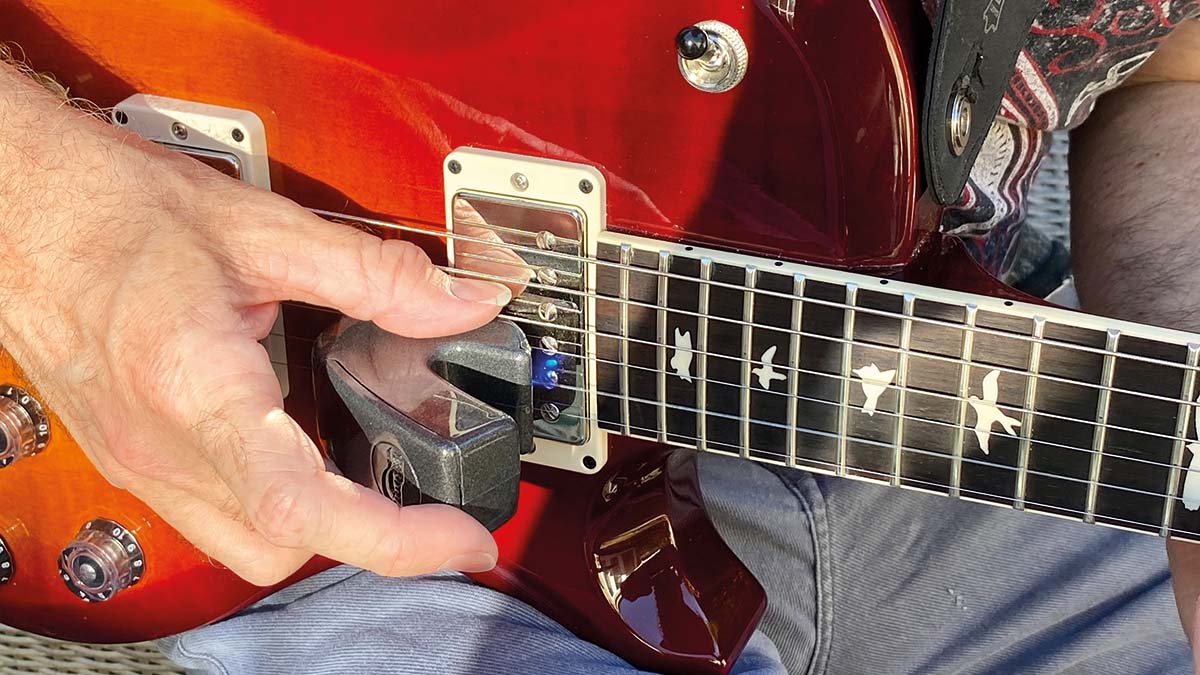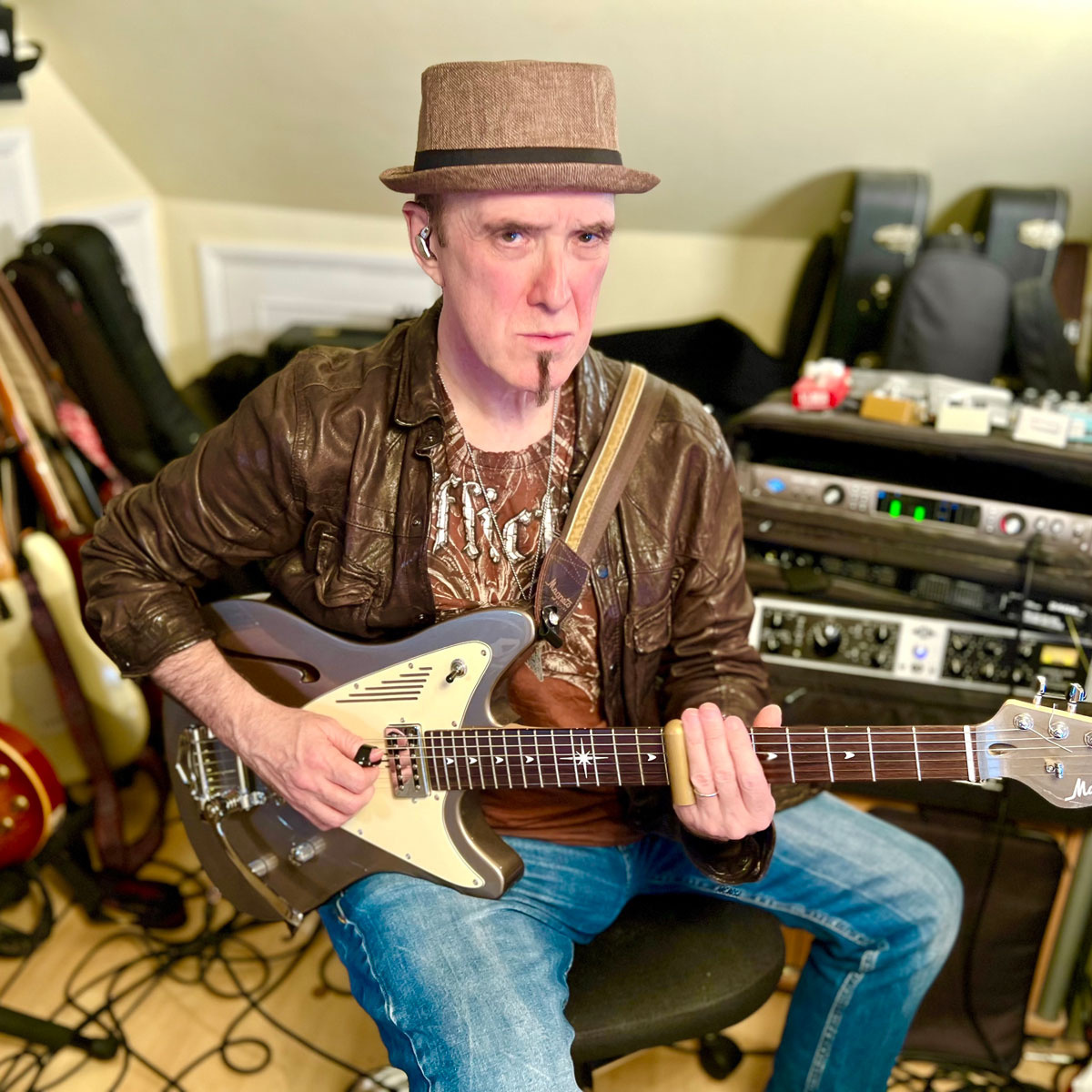6 ways to use an EBow on electric guitar
If you've never thought about getting an EBow, this lesson on legato with the infinite-sustain device might just change your mind

The EBow is a hand-held device that provides endless string sustain, and has been used on many iconic records by artists such as The Blue Öyster Cult, U2, Big Country, Andrew Gold, and Radiohead. The EBow uses ‘Direct String Synthesis’, and in many cases the sounds produced are like those of a monophonic synthesiser.
However, there are challenges with the EBow, and one of these is string crossing. It takes practice to evenly jump from one string to the next, since the Bow needs to be placed accurately. Also, the note doesn’t sound immediately, so it’s best to start a line by hammering on the first note with the fretting hand. To swell into (and out of) a note, movie the EBow from a position where the noise builds quietly, to the ‘sweet spot’ where it should bloom beautifully.
Another dynamic technique is to hold the device in the usual position above the string but just making contact with the guide grooves either side, then push closer to the strings to where the sound is loudest. When playing legato with the EBow you don’t have to pull off and hammer on hard enough to sound the string, since the EBow keeps the note ringing for you.
The EBow has ‘normal’ and ‘harmonic’ mode. The latter generally has the octave included but neither setting is 100% reliable – often the normal setting will go into octave harmonics, like second harmonic feedback on a humbucking electric guitar into a loud amp. You also might want to turn down your volume and the treble as the EBow greatly boosts the signal from your guitar.
As far as vibrato goes, many players favour more of a classical guitarist’s approach - pulling in the line of the string so the note gets sharper and flatter.
Where the EBow really comes into its own is in the recording studio. For a brilliant example of how to use it, Google Andrew Gold’s song Still You Linger On, to hear him weave intricate EBow harmonies throughout this beautiful ballad. It could just inspire you to nip out and buy one. Good luck!
Get the tone
Amp Settings: Gain 7, Bass 6, Middle 4, Treble 4, Reverb 5
One of the EBow’s selling points is that it’s dynamic, so you don’t want to iron out the nuances. Turn your guitar amp down a little from where you’d normally set it and turn the tone down a tad on your guitar – the EBow boosts both volume and treble. It takes time to get used to the unit’s idiosyncrasies, but be patient, it’s a great sound that can bring a track to life.
Example 1. Note swells
Listen to how lifting the bow off the strings and quickly lowering it to the optimum point for note projection adds a swell articulation to the note.
Example 2. Playing a scale
Playing along one string will normally mean using a combination of slides, hammer-ons and pull-offs, but it’s much easier than crossing strings with the EBow.
Example 3. Neo-classical line based in E harmonic minor
You’ll have to carefully prepare where to use slides here to make the notes flow smoothly. The EBow helps by keeping the note ringing.
Example 4. Pull-offs to an open string
This is a spooky-sounding line which mixes wider intervals and pull-offs to the open second string. Again prep the slides carefully.
Example 5. Mimicking a conventionally played line
Note the sweep across the top three strings at the start! This approach needs a distorted tone (possibly a little compression, too).
Example 6. Sweeping across strings
This is a tricky one! Use the EBow to lightly sweep across the strings. It’s really difficult to keep the noise level down, but do your best to keep it clean.
Get The Pick Newsletter
All the latest guitar news, interviews, lessons, reviews, deals and more, direct to your inbox!
A professional guitarist for many years, Andy G Jones has played with Van Morrison, James Ingram, Lamont Dozier, Queen (Brian May and Roger Taylor), Robben Ford, Billy Cobham, John Illsley (Dire Straits), KT Tunstall, Albert Lee (featured on Andy's upcoming CD), Mike Finnigan, Dave Landreth and Ryan Voth from The Bros. Landreth, Malford Milligan, The BBC Radio Big Band, Patti Austin, Hamish Stuart (Average White Band), Lalo Schifrin (Hollywood film composer Bullitt, Mission Impossible), Hank Marvin, James Dean Bradfield (the Manic Street Preachers), Grady Tate, Agnetha from ABBA, Cliff Richard, Dudley Moore, Nathan James (Inglorious), Joey Tempest (Europe) and Kelsey Grammar.
“There are so many sounds to be discovered when you get away from using a pick”: Jared James Nichols shows you how to add “snap, crackle and pop” to your playing with banjo rolls and string snaps
Don't let chord inversions bamboozle you. It's simply the case of shuffling the notes around








![Joe Bonamassa [left] wears a deep blue suit and polka-dotted shirt and plays his green refin Strat; the late Irish blues legend Rory Gallagher [right] screams and inflicts some punishment on his heavily worn number one Stratocaster.](https://cdn.mos.cms.futurecdn.net/cw28h7UBcTVfTLs7p7eiLe.jpg)


